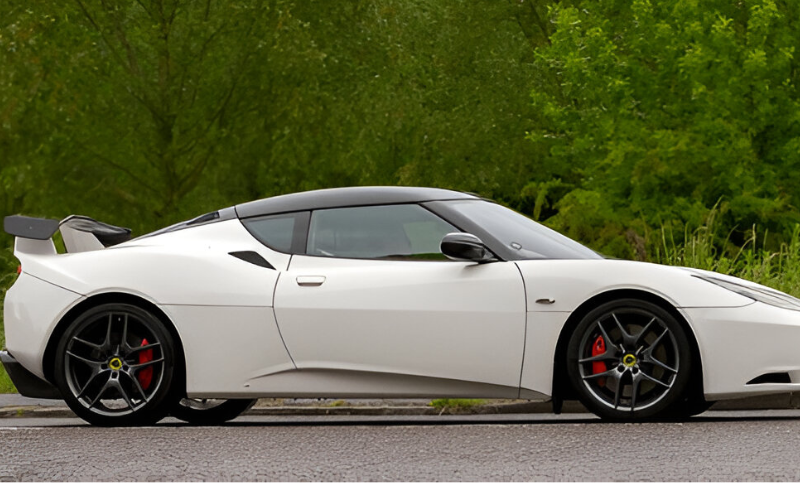The Lexus LFR is one of the most talked-about upcoming vehicles in the luxury automotive world. Positioned as the brand’s future flagship performance model, the LFR represents a bold step forward for Lexus, combining cutting-edge technology, refined design, and high-performance engineering. While Lexus has yet to release complete details, what we do know paints a clear picture: the Lexus LFR is being developed to redefine what a modern luxury sports car can be. In this article, we explore everything currently known about the LFR — its design philosophy, expected performance, interior experience, and how it fits into Lexus’s evolving vision for the future.
The Vision Behind the Lexus LFR
Lexus has long been known for its quiet luxury, refined interiors, and exceptional reliability. However, in recent years, the brand has made a noticeable shift toward performance, electrification, and emotional design. The Lexus LFR is a product of this transformation.
The LFR is expected to build on the legacy of past performance models like the Lexus LFA, which left a lasting impression with its high-revving V10 and limited production run. However, the LFR is not just about revisiting the past — it’s about moving forward with purpose. As Lexus moves deeper into electric and hybrid technology, the LFR represents its ambitions to stay competitive in a rapidly changing market.
This car is likely not just a halo vehicle, but also a symbol of Lexus’s future — blending sustainability with speed, beauty with performance, and technology with tradition. The LFR is more than just a new model; it’s a new chapter for the brand.
Design Language and Aesthetic Identity
The Lexus LFR embraces a dramatic design direction that reflects Lexus’s desire to push boundaries. Based on concept models and design previews, the car is expected to feature a low-slung body, wide stance, and sleek aerodynamics. Its sharp lines, aggressive front fascia, and futuristic lighting elements show a clear break from more conservative past designs.
This new design language isn’t just about looks — it also plays a role in enhancing performance and efficiency. Airflow management, weight distribution, and structural rigidity are all central to the LFR’s exterior design. At the same time, the car’s styling remains true to Lexus’s identity, combining elegance with an assertive road presence.
Every curve and angle is crafted not only for aesthetics but also to communicate the performance potential that lies beneath the surface. The LFR is likely to set a new benchmark for Lexus in terms of visual identity, showing the world that luxury can be bold, exciting, and unmistakably modern.
Performance Expectations and Powertrain Possibilities
At the heart of the Lexus LFR’s appeal is its promise of high performance. While official specs have not been released, industry experts believe the LFR will feature a highly advanced powertrain — potentially hybrid, plug-in hybrid, or fully electric.
Hybrid and Electric Speculation
Lexus has already committed to electrifying its lineup, and the LFR is expected to embody this goal. Some reports suggest that it could offer a high-performance hybrid system combining a twin-turbocharged V8 with electric motors for instant torque and enhanced efficiency. Others predict a full battery-electric vehicle (BEV) that could rival some of the most powerful EVs on the market.
This strategy aligns with Toyota and Lexus’s broader electrification goals, aiming for carbon neutrality without sacrificing performance. If the LFR does debut as an EV, it could also showcase new battery technologies, possibly even solid-state batteries — a major leap forward in range and charging speed.
Performance Benchmarks and Early Comparisons
The Lexus LFR is widely seen as the spiritual successor to the LFA, which remains an icon among car enthusiasts. While the LFA was known for its thrilling engine sound and limited production, the LFR is expected to deliver an entirely new kind of performance — quiet yet powerful, seamless yet thrilling.
Some early benchmarks suggest Lexus is aiming to compete directly with the likes of the Porsche Taycan, Tesla Roadster, and Audi e-tron GT. Acceleration times could drop below 3 seconds from 0 to 60 mph, with top speeds and handling refined for both track and street use.
Whether hybrid or electric, the LFR is poised to deliver a level of performance that repositions Lexus as a true competitor in the world of high-end sports cars.
Interior Concept and Driving Experience
While most attention is on the LFR’s power and design, its interior may be equally groundbreaking. Lexus interiors are known for their attention to detail, comfort, and quiet refinement. In the LFR, expect those qualities to be elevated with a modern twist.
Concept interiors hint at a minimalist, driver-focused cockpit with advanced digital displays, premium materials, and intuitive controls. Sustainable materials may also play a part, supporting Lexus’s environmental goals without compromising luxury.
The driving experience is likely to be immersive and tech-enhanced. From customizable driving modes to adaptive suspension systems and AI-assisted features, the LFR could introduce a new standard of intelligent performance for the brand. Comfort won’t be sacrificed, either — Lexus will likely balance high-performance handling with everyday drivability.
Production Timeline and Market Position
One of the biggest questions surrounding the Lexus LFR is: when will it arrive? While Lexus has not provided an exact release date, most analysts suggest a debut sometime between late 2025 and 2026. This timeline would give the brand enough time to finalize its performance technologies and align the release with its broader electrification strategy.
In terms of market position, the LFR is expected to be a flagship model — both in price and performance. It may sit above models like the LC 500, targeting a niche group of enthusiasts who value both luxury and speed. Pricing could easily exceed six figures, placing it in direct competition with other luxury performance EVs and hybrids.
However, unlike some ultra-exclusive supercars, the LFR may not be as limited in production as the LFA. Lexus may aim for broader availability while still maintaining a sense of exclusivity and prestige.
Conclusion
The Lexus LFR represents a bold new direction for Lexus, combining high-performance ambitions with luxury design and future-forward technology. Whether it arrives as a hybrid or fully electric supercar, the LFR is set to redefine what drivers expect from the brand. It symbolizes Lexus’s commitment to innovation and its readiness to compete in the next generation of high-performance vehicles. As more details emerge, one thing is clear: the Lexus LFR is not just another concept — it’s a glimpse into the exciting future of automotive excellence.
FAQ
Q1: Is the Lexus LFR confirmed for production?
As of now, Lexus has not officially confirmed a production model, but several concept reveals and corporate statements suggest that development is underway. A production version is expected within the next few years.
Q2: Will the Lexus LFR be fully electric or hybrid?
It’s not confirmed yet, but strong rumors suggest it could come as either a high-performance hybrid or a fully electric vehicle, depending on market readiness and technological advancements.
Q3: How does the LFR compare to other Lexus performance models?
The LFR is expected to surpass all current Lexus performance models, including the LC and RC F, in terms of speed, technology, and design. It will likely serve as the new flagship of the performance lineup.
Q4: What price range is expected for the Lexus LFR?
While no official pricing has been released, the Lexus LFR is expected to be positioned in the high-end segment, potentially starting around $150,000 or higher depending on its powertrain and features.

